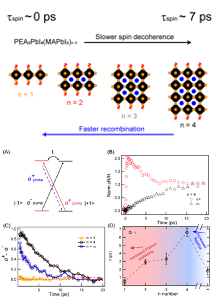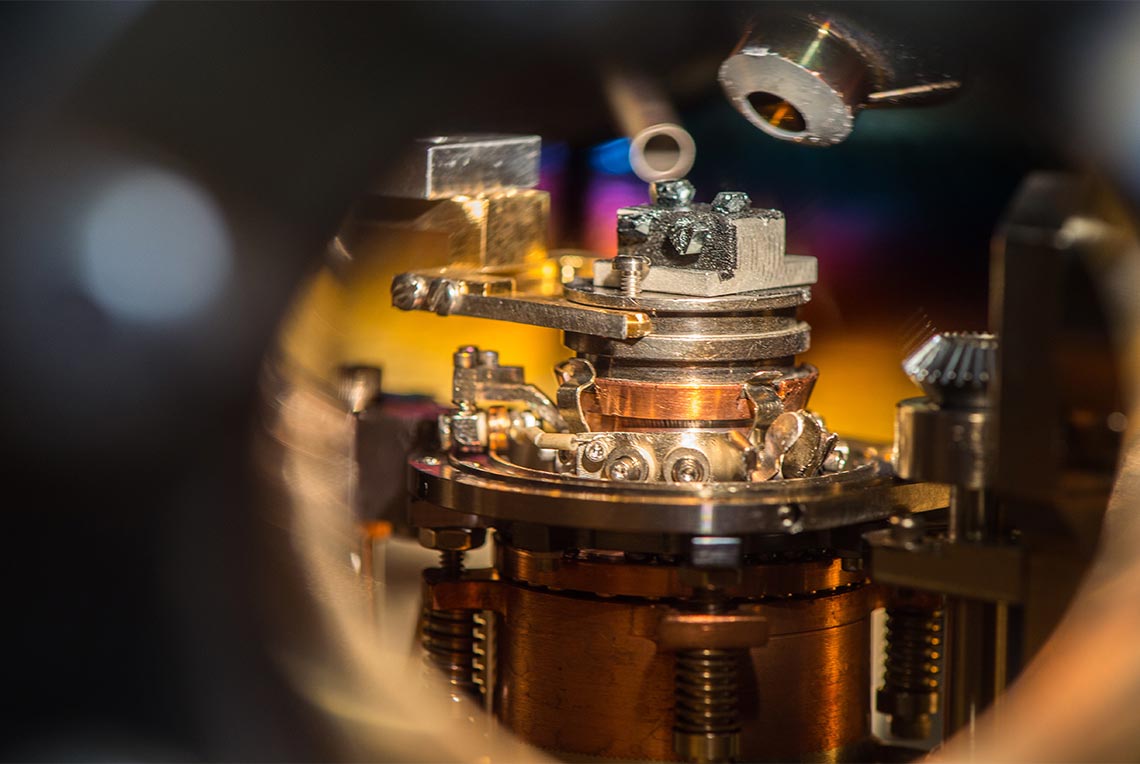Spin-Coherence Time as a Function of Layer Thickness
Aug. 28, 2018
In addition to larger structural distortion in 2D layered systems, there is a larger phonon coupling to carriers. These two effects can counterbalance each other to produce the longest live spin-coherence lifetime in a layered system where the layers contain 4 PbI62- octahedra.
Scientific Achievement
We found an interplay between Rashba splitting, which tends to lengthen the spin-coherence time, and lattice softening, which increases the phonon scattering and tends to decrease the spin-coherence lifetime. The longest room temperature spin-coherence lifetime is 7 ps for the n=4 2D perovskite based system.
Significance and Impact
2-dimensional (2D) lead-halide based perovskite layered systems are offer greater tunability and stability compared to their 3D counterparts making them candidates for high-performance optoelectronic applications. There is a growing interest in exploring the lead-halide perovskite family for optospintronics. The presence of lead and iodide induces a large spin-orbit coupling (SOC) which in the presence of structural inversion asymmetry lifts the spin-degeneracy of the conduction and valance bands. 2D perovskites break the symmetry of the 3D system, therefore, they can enhance the Rashba-effect and increase their potential for optospintronic applications.
Research Details
- Exfoliated single crystals of layered 2D systems (n=1,2,3,4) were studied using transient absorption spectroscopy
- THz spectroscopy measured the phonon modes as a function of layered thickness
Related People
Joseph J. Berry
National Renewable Energy Laboratory
Kai Zhu
National Renewable Energy Laboratory
Matthew Beard
National Renewable Energy Laboratory










